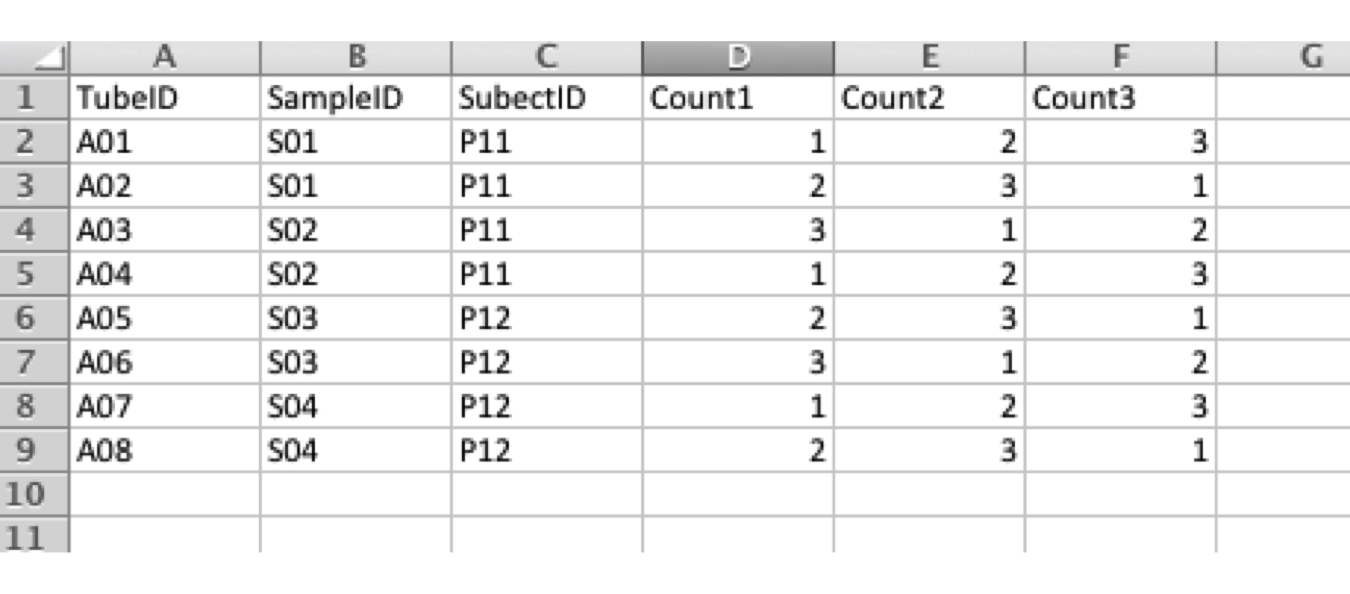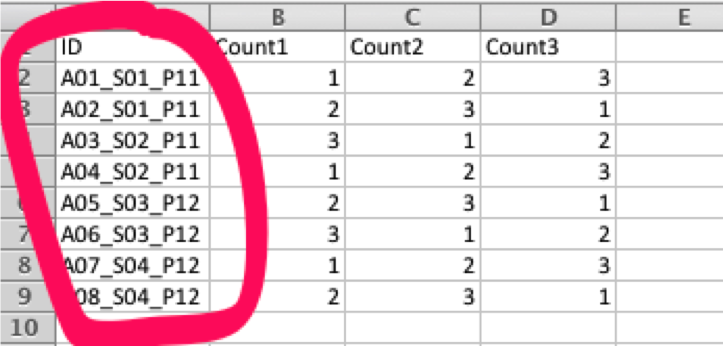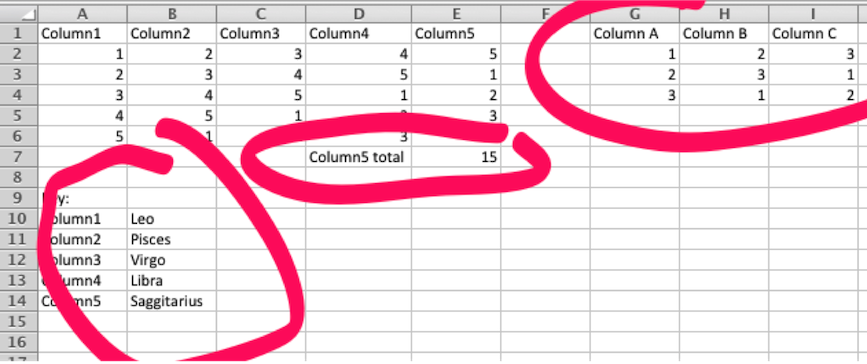Preparing Data for Analysis¶
In biomedical contexts, data most often comes from external text files such as spreadsheets. Here we will look at how to prepare such data for importing into R as a data frame. In order to read spreadsheets correctly, you need to be follow some simple rules when cosntrucitng the table:
Do this¶
- One cell = one value
- Easy to filter by tube, sample or subject
- Easy to write validation rules or lookup table

Not this¶
- ID column has 3 different values
- Need to do text parsing to recover information – very error prone

Round-trip from Excel to CSV and back to Excel¶
Before¶
- Inofmration in highlighting
- Information in comment notes
- Information in font color
- Merged cells

After¶
- Comments are lost
- Highlighting is lost
- Bad cell formatting is lost
- Merged cells become missing information

- When sorting, make sure you sort all the columns, even the ones that are not on the screen
- Use a lookup table rather than typing if possible to avoid errors due to typos
- Use a special marker to indicate misssing values - do not use 0 or 999 etc
- Do not keeep multiple copies of the same spredsheet
- If you must keep multiple copies, make sure you version them clearly in the fileanme
- Excel is OK if you use almost NONE of its features!

